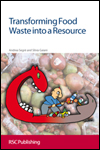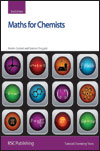 The new edition of Maths for Chemists, combines Volumes I and II of the hugely successful Tutorial Chemistry Texts, to provide an excellent resource for all undergraduate chemistry students particularly focussing on the needs of students who may not have studied mathematics beyond GCSE level (or equivalent). The text is introductory in nature and adopts a sympathetic approach for students who need support and understanding in working with the diverse mathematical tools required in a typical chemistry degree course. It provides a concise account of the basic principles underlying a given subject, embodying an independent-learning philosophy and including worked examples.
The new edition of Maths for Chemists, combines Volumes I and II of the hugely successful Tutorial Chemistry Texts, to provide an excellent resource for all undergraduate chemistry students particularly focussing on the needs of students who may not have studied mathematics beyond GCSE level (or equivalent). The text is introductory in nature and adopts a sympathetic approach for students who need support and understanding in working with the diverse mathematical tools required in a typical chemistry degree course. It provides a concise account of the basic principles underlying a given subject, embodying an independent-learning philosophy and including worked examples.
The topics covered include: power series, which are used to formulate alternative representations of functions and are important in model building in chemistry; complex numbers and complex functions, which appear in quantum chemistry, spectroscopy and crystallography; matrices and determinants used in the solution of sets of simultaneous linear equations and in the representation of geometrical transformations used to describe molecular symmetry characteristics; and vectors which allow the description of directional properties of molecules. New material includes a new chapter on Statistics and Error Analysis.
Let us help you succeed. See http://www.rsc.org/Shop/books/2012/9781849733595.asp for more details.











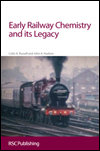

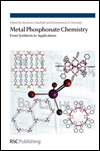
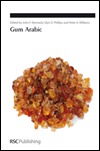
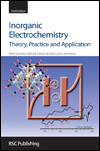 Written by Piero Zanello and Fabrizi de Biani both from University of Siena and Carlo Nervi, University of Torino, this second edition of a classic book has been fully revised and updated and is a straightforward, logical introduction to electrochemical investigations for inorganic chemists. Covering every feature of inorganic electrochemistry – the introduction is followed by chapters on the basic characteristics of electrochemistry followed by practical and applicative aspects and ends with full appendices. It is probably the only publication with a simple approach to electrochemical aspects of the topics in inorganic chemistry.
Written by Piero Zanello and Fabrizi de Biani both from University of Siena and Carlo Nervi, University of Torino, this second edition of a classic book has been fully revised and updated and is a straightforward, logical introduction to electrochemical investigations for inorganic chemists. Covering every feature of inorganic electrochemistry – the introduction is followed by chapters on the basic characteristics of electrochemistry followed by practical and applicative aspects and ends with full appendices. It is probably the only publication with a simple approach to electrochemical aspects of the topics in inorganic chemistry. 